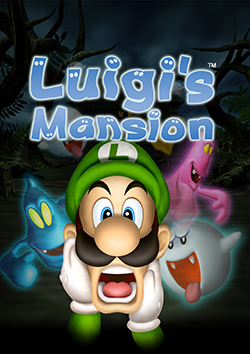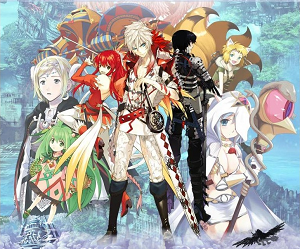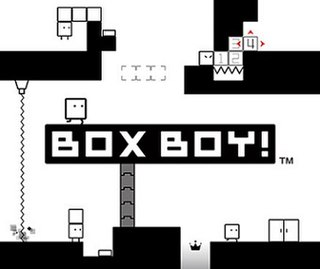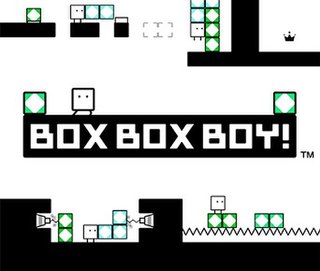
Dr. Mario is a 1990 puzzle video game developed and published by Nintendo for the Nintendo Entertainment System, Famicom, and Game Boy. It was produced by Gunpei Yokoi and designed by Takahiro Harada. The soundtrack was composed by Hirokazu Tanaka.

Luigi's Mansion is a 2001 action-adventure game developed and published by Nintendo. The game was a launch title for the GameCube and was the first game in the Mario franchise to be released for the console; it was released in Japan on September 14, 2001, in North America on November 18, 2001, in Europe on May 3, 2002, and in Australia on May 17, 2002. It is the third video game in which Luigi is the main character instead of Mario, after Mario Is Missing! and Luigi's Hammer Toss. Players control him as he explores a haunted mansion, searches for Mario and deals with ghosts by capturing them through a vacuum cleaner supplied by Professor E. Gadd.

Super Mario Bros.: The Lost Levels is a 1986 platform game developed by Nintendo R&D4 and published by Nintendo. A sequel to Super Mario Bros. (1985), the game was originally released in Japan for the Family Computer Disk System as Super Mario Bros. 2 on June 3, 1986. Nintendo of America deemed it too difficult for its North American audience and instead released an alternative sequel, also titled Super Mario Bros. 2, in 1988. The game was renamed The Lost Levels and first released internationally in the 1993 Super Nintendo Entertainment System compilation Super Mario All-Stars. The game has since been ported to the Game Boy Color and Game Boy Advance, along with being re-released through emulation for the Wii, Wii U, Nintendo 3DS, and Nintendo Switch.

Wario's Woods is a puzzle video game developed by TEC and published by Nintendo for the Nintendo Entertainment System. It was released in Japan and North America in 1994 and Europe in 1995. A spin-off of the Mario series, players control Toad in his mission to defeat Wario, who has taken control of the Peaceful Woods. Gameplay revolves around clearing each level by using bombs to destroy groups of enemies. The game also features a multiplayer mode that allows two players to compete against each other.

Balloon Fight is an action video game developed by Nintendo and HAL Laboratory and published by Nintendo. The original arcade version was released for the Nintendo VS. System internationally as Vs. Balloon Fight, while its Nintendo Entertainment System counterpart was released in Japan in 1985 and internationally in 1986.

Ghosts 'n Goblins, known as Makaimura in Japan, is a platform video game developed by Capcom and released for arcades in 1985. It is the first game in the Ghosts 'n Goblins franchise, and has since been ported to numerous home platforms.
The Virtual Console is a defunct line of downloadable video games for Nintendo's Wii and Wii U home video game consoles and the Nintendo 3DS family of systems.

Toki Tori is a puzzle-platform video game developed by Two Tribes and published by Capcom for the Game Boy Color. The game follows a young chick, Toki Tori, and his quest to rescue his younger siblings, still in their eggs. To progress through the game, the player must pick up each egg on a level using a set number of tools, with new tools being introduced as the player progresses through the four worlds. This usually involves careful planning and creative thinking.

Crush is a 2007 puzzle-platform game developed by Kuju Entertainment's Zoë Mode studio and published by Sega for the PlayStation Portable. Its protagonist is Danny, a young man suffering from insomnia, who uses an experimental device to explore his mind and discover the cause of his sleeplessness. Each level of the game, representing events from Danny's life and inspired by artists such as Tim Burton and M.C. Escher, requires the player to control Danny as he collects his "lost marbles" and other thoughts.

Professor Layton and the Miracle Mask is a puzzle adventure video game developed by Level-5. It is the fifth game in the Professor Layton series, the second in the prequel trilogy of games, and the first in the series to be developed for the Nintendo 3DS. Miracle Mask was released as a launch title for the Nintendo 3DS in Japan in February 2011, becoming the best-selling game on the day of the system's launch. The game was later released worldwide in October 2012. Professor Layton and the Miracle Mask Plus, an enhanced edition featuring new puzzles and added cutscenes, was released on the Nintendo eShop in Japan in February 2013.

Tetris: Axis, released as Tetris in some regions, is a puzzle video game developed by Hudson Soft for the Nintendo 3DS. The game was released in all regions in October 2011 and was published by Namco Bandai Games in Japan, Nintendo in North America, and Tetris Online in Europe and Australia.

Mighty Milky Way was an action puzzle video game for the Nintendo DSi. It was the second title after Mighty Flip Champs! in the Mighty series from WayForward Technologies. The game was released for download through DSiWare in North America, Europe, and Japan.

Pushmo is a downloadable puzzle game developed by Intelligent Systems and published by Nintendo for its Nintendo 3DS handheld system, available on the Nintendo eShop. In the game, players must shift around puzzle blocks in order to create steps and platforms, ultimately to reach children who have been trapped within the giant structures. A sequel, Crashmo, was released for the Nintendo 3DS in 2012. A third game, Pushmo World, was released for Wii U on June 19, 2014. A fourth game, Stretchmo, was released for Nintendo 3DS in May 2015.

Unchained Blades, titled UnchainBlades ReXX in Japan, is a 2011 dungeon crawler role-playing video game developed by FuRyu and published by Xseed Games for the Nintendo 3DS and PlayStation Portable.

Mario and Donkey Kong: Minis on the Move, known in Japan as Mario & Donkey Kong: MiniMini Carnival, is a 2013 puzzle game developed by Nintendo Software Technology for the Nintendo 3DS. The fifth entry in the Mario vs. Donkey Kong series, it was released exclusively via the Nintendo eShop download service on May 9, 2013, in the PAL region and North America, and on July 24 in Japan.

BoxBoy! is a puzzle-platform game developed by HAL Laboratory and published by Nintendo for the Nintendo 3DS handheld console. Players control Qbby, a square-shaped character who can produce a string of connected boxes. The boxes are used to overcome obstacles in stages that Qbby must be guided through. The project plan for BoxBoy! was devised in 2011 by director Yasuhiro Mukae, although the game did not enter development until 2013. The core gameplay concept remained the same throughout the title's development, however, changes were made to length of levels and the structure of the game. Each set of stages was designed with a specific theme in mind with the intention of expanding the game's depth by introducing new elements continuously. The game was released via the Nintendo eShop distribution service in Japan in January 2015, and worldwide in April 2015.

Pokémon Picross is a freemium puzzle video game featuring Pokémon characters developed by Jupiter Corporation and published by Nintendo and The Pokémon Company for the Nintendo 3DS. The title is part of the "Picross" nonogram series that use number-based grid puzzles to reveal pictures. It was released as a downloadable title on the Nintendo 3DS eShop worldwide in December 2015.

Mini Mario & Friends: Amiibo Challenge is a 2016 puzzle-platform game developed and published by Nintendo for the Nintendo 3DS and Wii U. The seventh entry in the Mario vs. Donkey Kong series, the game was free to download on the Nintendo eShop, but requires Nintendo's Amiibo lineup in order to play. It was released in Japan in January 2016 and worldwide in April.

BoxBoxBoy! is a puzzle-platform game developed by HAL Laboratory and published by Nintendo for the Nintendo 3DS handheld game console. The second game in the BoxBoy! series, the game was released in Japan in January 2016, and in other territories in June 2016.

Bye-Bye BoxBoy! is a puzzle-platform game developed by HAL Laboratory and published by Nintendo for the Nintendo 3DS. The third game in the BoxBoy! series, it was released worldwide in 2017. The game was followed by BoxBoy! + BoxGirl! for the Nintendo Switch in 2019.



















